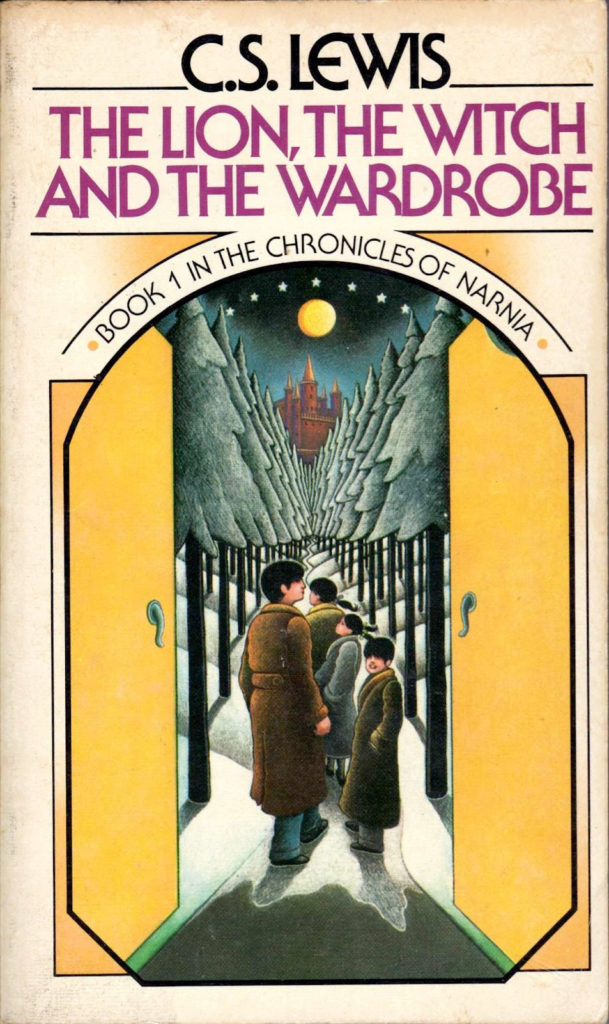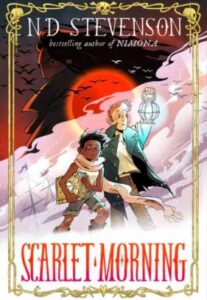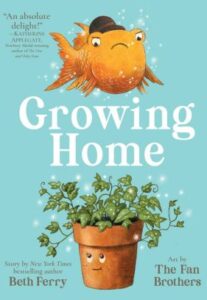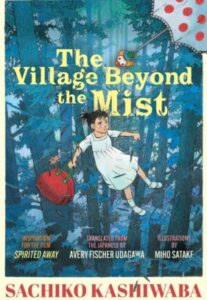Peter, Susan, Edmund and Lucy Pevensie are sent to live in Professor Kirke’s home in the English countryside during Word War II. As the children explore the house, Lucy discovers an old wardrobe in a spare room. The wardrobe is actually a passage to Narnia, a world filled with magic. Lucy goes through the wardrobe and meets a goat-legged man named Mr. Tumnus. She learns that Narnia is ruled by the evil White Witch who keeps Narnia under an eternal winter.
When Lucy returns to Professor Kirke’s house, she discovers that though she spent hours in Narnia, no time has passed in her world. Her siblings do not believe her story about Narnia because the wardrobe’s portal doesn’t work when they try to go through it. A few days later, when the children are playing hide-and-seek, Lucy hides in the wardrobe, and Edmund follows her into Narnia. Edmund meets the White Witch, who introduces herself as the Queen of Narnia. The Witch feeds Edmund an enchanted form of Turkish delight and asks him to bring his brother and sisters to her.
Edmund and Lucy return home, but Edmund lies about having been to Narnia, which deeply hurts Lucy. Peter and Susan seek advice from Professor Kirke, who tells them that Lucy may be telling the truth about finding a magical country. When Professor Kirke’s housekeeper gives a tour of the house, all four children hide in Lucy’s wardrobe and are able to enter Narnia together. They find Mr. Tumnus’ home empty and read a notice saying he’s been arrested for high treason against the White Witch. The children want to help Mr. Tumnus, but a talking animal named Mr. Beaver tells them they are in danger and must come with him to safety. At the Beavers’ dam, the children are told that Aslan the Lion, the true king of Narnia, has been seen and that he will put a stop to the White Witch’s evil rule. The children also learn that they will play a part in the Witch’s downfall because a prophecy says that when four humans sit in the thrones at the castle of Cair Paravel, the Witch will die.
Edmund runs away from his siblings to meet the White Witch, and the Beavers take the remaining children to a hiding place to protect them from her. The next morning, Father Christmas arrives at their new hiding place and gives the children presents. He says the Witch’s magic is weakening. When Edmund reaches the Witch’s house, she is angry that he has come alone until he tells her that his brother and sisters are at the Beavers’ house. The Witch dispatches wolves to kill everyone at the Beavers’ house, but they find no one there. The Witch takes Edmund with her as she journeys to an ancient landmark called the Stone Table. As they travel, the eternal winter thaws into spring. Meanwhile, the other Pevensies reach the Stone Table where Aslan and a large group of Narnians welcome them. A wolf sent by the White Witch attacks the company, and Peter kills it with his sword.
The White Witch decides to kill Edmund, but a rescue party sent by Aslan saves Edmund and brings him back to the Narnians at the Stone Table. The White Witch demands that Aslan allow her to kill Edmund because traitors are her lawful victims. That night, Susan and Lucy wake and find Aslan leaving the Narnian camp. They follow him. Aslan goes to the White Witch’s camp, where she and her servants mock, then tie up Aslan before killing him. Susan and Lucy are heartbroken, but rejoice when Aslan comes to life again the next day. Aslan takes the girls to the Witch’s castle, where he breathes on the stone statues, including the one of Mr. Tumnus, and restores them to life. Aslan leads the resurrected Narnians to the battlefield where the Witch fights Peter’s army. Aslan kills the Witch, the good Narnians win the battle and the four Pevensies are taken to Cair Paravel to be crowned. The children rule Narnia until they are adults. A hunting trip through the woods leads them back into their own world, where no time has passed and they are children again. Professor Kirke tells them they will all return to Narnia someday, but not through the wardrobe.









